Antifreeze is a crucial automotive additive, preventing your engine coolant from freezing. It is especially important over winter time. If antifreeze is low or absent, your car's performance will be impacted.
Antifreeze helps ensure the water used to cool your engine does not freeze; but it also helps prevent it from boiling in summer months.
The water pump directs this water around your engine. A component called ethylene glycol is key to antifreeze; it inhibits the ability of water molecules to expand and crystallize in low temperatures - essentially lowering the freezing point.
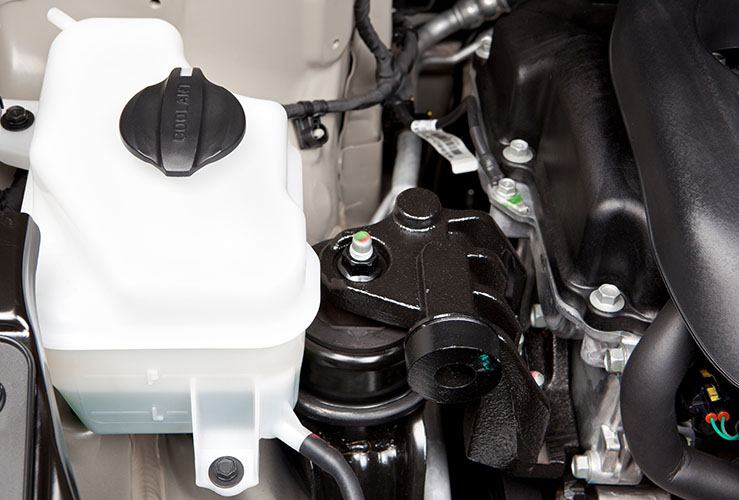
Without antifreeze, water of freezes at 0 degrees Celsius. But with antifreeze (50/50 water and ethylene glycol) the freezing point falls to -37 degrees. The boiling point rises slightly to 106 degrees.
Each year, before the winter set in, open your bonnet and top up your antifreeze as required.
Here we answer common questions about antifreeze…
Antifreeze vs coolant: What’s the difference?
Once antifreeze is diluted with distilled or deionised water (at a 50:50 ratio), it is known as coolant. These terms are often used synonymously.
What is a coolant reservoir tank?
Every petrol or diesel engine needs a coolant reservoir tank. You’ll find it by opening the bonnet and looking near the engine.
The reservoir holds coolant which is used to cool the engine.
Without sufficient coolant, the engine may overheat or seize up.
Where is the coolant reservoir located?
The coolant reservoir is where you should add antifreeze for your car engine. You'll find the coolant reservoir with warning stickers on the lid.
If you’re unsure where to pour antifreeze in your car, your vehicle handbook will show you where it is and how to do it.
The reservoir should be transparent enough to see how much coolant is inside.
Naturally, if there is a sufficient amount (up to the ‘full’ line), you do not need to open it. If a top up is necessary, unscrew the coolant cap and pour in the antifreeze to the ‘maximum’ mark.
Should I open the coolant reservoir when it’s hot?
For safety reasons, ensure the engine is cool before you touch the coolant reservoir cap (or any part of the engine).
Wait at least 30 minutes from the last time it was used.
How to check antifreeze in my car?
After locating the coolant reservoir, check the coolant level is between the ranges indicated. If it is too low, you’ll need to top it up.
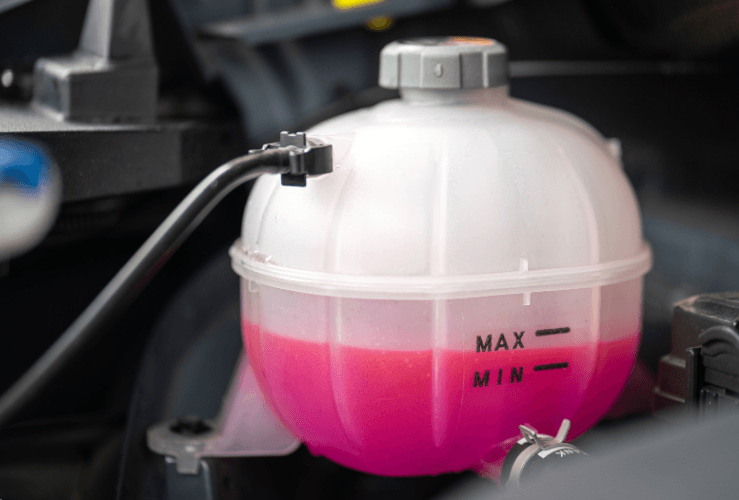
How to add the antifreeze mix?
Here’s how to add antifreeze to a car: Look for the coolant reservoir - it will likely be a semi-transparent whitish shade. Carefully unscrew the lid a little and release any build of pressure. Then remove the lid fully and add the antifreeze up to the ‘fill’ line.
Best antifreeze for your car?
A wide choice of antifreeze products are available to buy, but you should always use the type of antifreeze recommended by the manufacturer.
You should be able to find this information in your handbook.
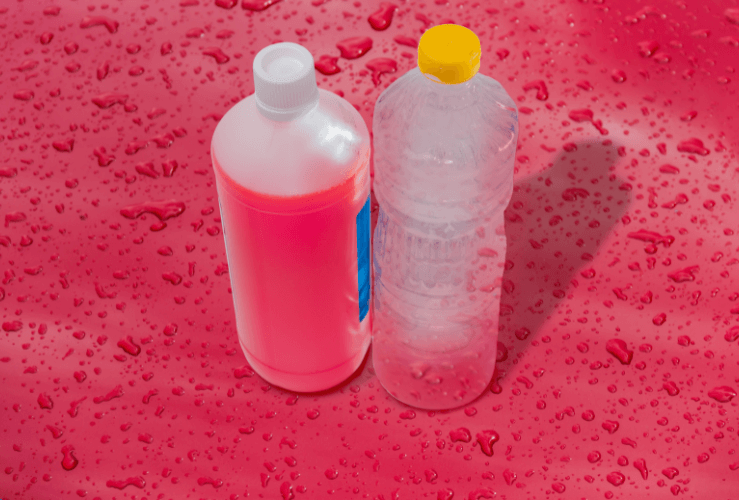
Is it OK to add water to the coolant reservoir?
If the product is concentrated antifreeze, you’ll need to dilute it with distilled water at a ratio of 50:50.
The water must be distilled so it is free of any minerals that build up in the radiator and reduce flow. Do not use regular tap water. You might also use deionized water.
Do you add coolant to the radiator or reservoir?
You must add coolant to the coolant reservoir - not the radiator.
As mentioned, if you buy concentrated antifreeze, you’ll need to dilute it with distilled water at a 50:50 ratio. However, carefully read the instructions on the bottle.
How often should I add antifreeze to my car?
If your antifreeze/coolant drops below the range indicated on the coolant reservoir you should top it up.
Your handbook will explain how often you should expect to top it up (usually a minimum of 30,000 miles).
Older cars may need more regular top-ups.
Cost to replace antifreeze?
Antifreeze replacement costs depend on how you do it.
Buying antifreeze and replacing it yourself will cost around £40. Getting a mechanic to do it for you could cost around £70.
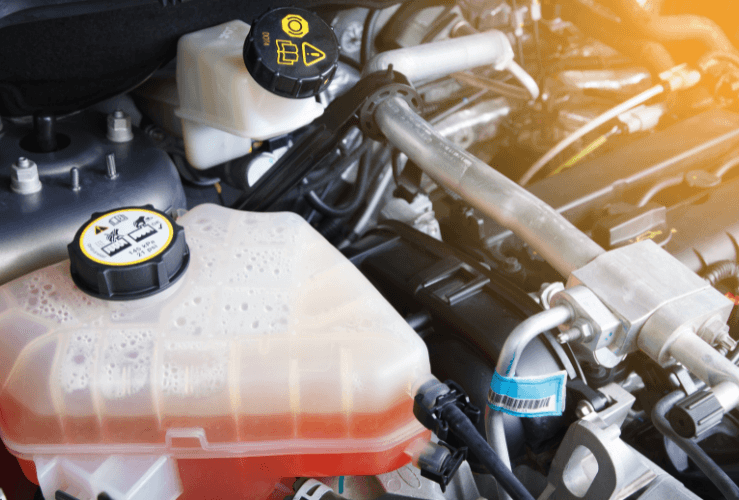
Which antifreeze colour for my car?
In short, check your car manual to find out which antifreeze you need.
You're unlikely to come across green antifreeze, as this was made to an old formula that uses Inorganic Additive Technology (IAT). It was used into the 1990s.
- Orange antifreeze signifies the use of neutralised organic acids, which helps inhibit corrosion. It may also be red.
- Red antifreeze signals Hybrid Organic Acid, which combines the benefits of green and orange antifreeze. Confusingly, it may also be orange!
Can I mix different antifreeze for my car?
No. Mixing different antifreeze types could impair performance and increase corrosion.
Refer to your vehicle handbook for the correct type of antifreeze.
What happens if you put too much antifreeze in your car?
If you put too much antifreeze/coolant in your car, it will likely be released from an overflow hose - probably resulting in a puddle under your car.
However, excessive coolant overflow could damage electrical systems if they come into contact with wiring.
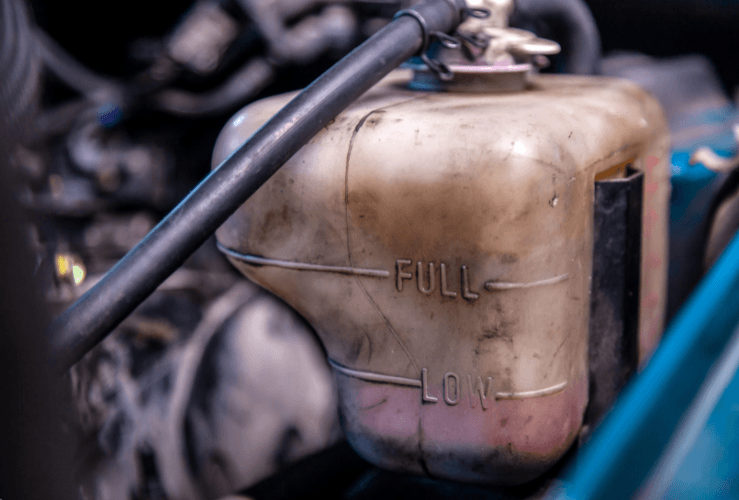
Can I drive with a cracked coolant reservoir?
A cracked coolant reservoir should be fixed promptly, since it may be causing coolant to leak. However, it’s likely you will be able to drive for some time with a cracked coolant reservoir - depending on the extent of the damage.
While a crack may not be visible to the naked eye, if your coolant is running low sooner than expected, you’re experiencing engine overheating, or see visible leaks, it suggests your coolant reservoir is damaged.
Bottom line: get it fixed as soon as you can.
Can I drive with an empty coolant reservoir?
You should not drive with an empty coolant reservoir. Coolant is essential for drawing heat away from your engine.
Without sufficient levels of coolant, your engine could overheat or seize up - potentially resulting in permanent damage (e.g., pistons welding to cylinders) that will be expensive to repair. In some cases, repairs may be impossible or uneconomic (i.e. it may be cheaper to buy a new vehicle).
Why does my coolant reservoir keep emptying?
If your coolant keeps emptying soon after being refilled, there could be a number of causes. The most likely are: a leak in the radiator, heater core, or a hose; the radiator cap is jammed open; a leak in the water pump/water pump seal; or a blown head gasket, releasing coolant into the combustion chamber and exiting through the exhaust.
Why does it smell like antifreeze inside my car?
If you notice the smell of antifreeze in your vehicle, it’s a sign there’s a coolant leak - causing the distinct antifreeze smell to be pumped out through your air vents.
It’s important to get any coolant leak repaired promptly.
How to fix a coolant reservoir leak?
You may be able to fix a small crack in your coolant reservoir with epoxy resin or purpose-made sealant. However, if the damage is extensive, replacement is the best course of action.
Can a bad thermostat cause bubbling in the coolant reservoir?
Yes. When a thermostat fails, it doesn’t open and close when it needs to.
With the resultant unregulated airflow, a bubbling effect may occur inside the coolant reservoir or the radiator.




